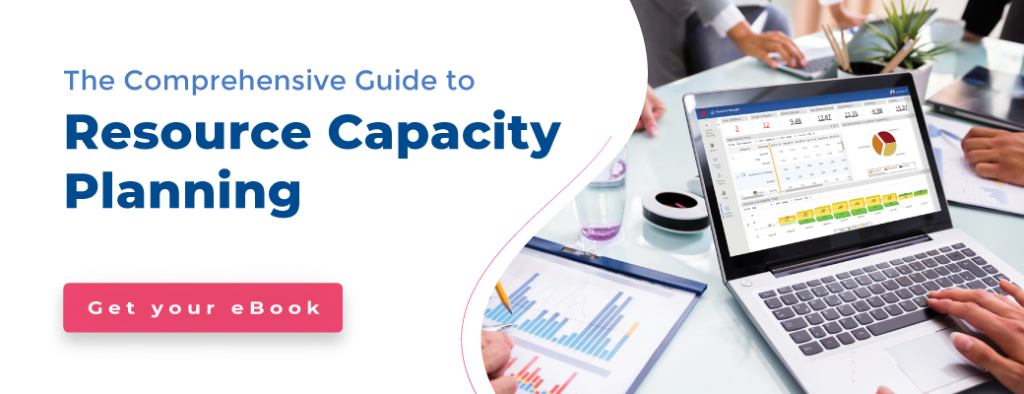“Change is constant” – means that change is occurring continuously. Every sphere of life that we have walked in the past has evolved and transformed from time to time. Successful organizations have disappeared because they haven’t modified their existing business models.
From siloed departments to staying connected across global boundaries, we have come a long way. So change is inevitable and necessary for the survival of any business.
Every firm gradually undergoes an organizational change to remain competitive and viable in the market. Be it expanding a department or merging with another company, all enterprise-wide changes significantly impact the business, its processes, products, and people.
According to the Gartner reports- “The average organization has undertaken five significant enterprise changes in the past three years, and 75% of organizations expect more change initiatives in the coming years.”
This article highlights the basic definition and importance of an effective change management plan. It also discusses the best change management strategies that you can employ for successfully navigating through the change.
Let’s go into more details:
What is Organizational Change Management?
Organizational change management can be defined as- the systematic approach and application of knowledge, tools, and resources to deal with a change in an organization.
This change could be enterprise-wide or team-based and might arise from many factors, from technology to internal operations to management and finances. It can be planned years in advance or may be forced promptly due to sudden market volatility. Thus, change management is both a process and a competency as it covers a definitive strategy and demands the right personnel to execute it.
It focuses on people’s side and helps them embrace and adapt to a change seamlessly. It includes three significant phases, i.e., Preparation, Implementation, and Monitoring.
Given the definition of organizational change management, let us understand its significance in the business realm,
Why is Change Management Important?
The work processes in every business have drastically changed over the years. Imagine working in an organization with no supporting software to collaborate? Or assume working in a siloed work environment with no team cooperation? Dreary, isn’t it? If it were not for evolution and adaptability, we would not be working in an agile organization as we are today.
These shifts did not occur overnight. Managers and stakeholders followed a series of steps to execute them effortlessly. For example, if you are introducing new software in the firm, it is imperative to train the resources and ensure that they understand their new responsibilities and work efficiently.
Therefore, a well-developed Change management framework is a quintessential part that streamlines your organizational efficiency, drives your competitive edge, and enables you to stay relevant in the long haul. It helps to go positively with the changing nature of work-culture and emerging trends, such as:
- Adopting new technology systems and tools
- Automating existing processes
- Integrating new process
- Restructuring workflows, resources, and departments
- Implementing artificial intelligence (AI)
- Leadership changes
One of the significant changes adopted by several organizations is the introduction of an open space work environment. The flexible workplace supports mobility and collaboration among employees, ultimately fostering productivity and retaining employees.
However, change management is easier said than done. A high-level of team management is required to successfully reinforce change and keep cost in control, particularly when business aims for productivity and profitability.
Types of Organizational Change
Change strategies are crucial to avoid business stagnation and demand a systematic approach. Planning is the first and foremost step for the successful implementation of a change initiative. However, one can’t prepare without knowing what type of change is occurring. Organizational change can be broadly categorized into three sections which include;
-
-
Developmental change
Any organizational change that improves and optimizes previously established processes, strategies, and procedures is known as development change. Leaders implement many developmental changes to mitigate poor business performance.
For example, introduce an employee training or development program for new or existing employees, reviewing existing strategies that are no longer profitable.
-
-
-
Transitional change
The change that moves an organization from its current state to a new form to get into the desired future is termed transitional change. In this transitional change, a new approach entirely replaces the old way of the process.
For instance, transitional change is a planned change that occurs with the successful implementation of a strategic plan, such as implementing new technology or automation, mergers or acquisition, etc.
-
-
Transformational change
Unlike transitional change that focuses on replacing existing processes with new ones, transformational change is a large-scale organization-wide change that reshapes a business strategy. It alters the whole company culture, core values, and operations resulting in a shift in work culture.
According to MIT Sloan Management Review and Deloitte study, mature organizations are more focused on integrating digital technologies on a high level (social media, cloud, etc.)
It includes the introduction of new technology or new policy, restructures leadership roles, etc. Such large-scale change affects every single resource of the company. For instance, companies going remote.
Transformational change is needed for companies and businesses whose long-held policies and workflows have become obsolete.
Given the different types of changes, let us now understand how to drive organizational change amid a crisis.
Case Study: Change Management strategy During Crisis (COVID)
Under normal circumstances, driving change in the workplace is already quite tricky. The sudden global outbreak of COVID-19 made the organizational change even more complex and challenging for both businesses and employees.
In April 2020, the International Monetary Fund (IMF) anticipated COVID-19 to be one of the worst economic fallout since the Great Depression of 1930.
As the pandemic continued to spread, businesses had no choice but to review their short-term and long-term strategies. Some budding businesses have temporarily/permanently closed while other professional service industries mandated remote work culture to curb the spread.
As per the financial data platform Sentieo, More and more companies are implementing working from home policies and managing organizational change to ensure business continuity.
Many businesses started laying off a part of their resource pool because of business break-down. As a result, unemployment rates began escalating at higher rates than expected. In these uncertain times, companies needed to review their organizational plans and implement strategies that facilitated workplace transformation to be agile in functioning and collaborating.
The company leaders stepped up and took hard decisions to keep their respective firms afloat, but at the same time, they showed full support to the workforce to make this transit seamless.
The global pandemic taught some major business lessons to the decision-makers; one of them was the importance of resilience and maintaining a continuity plan.
Driving change doesn’t mean equipping employees with new technology or new ways of communicating. Implementing change requires a preparatory phase, a proper communication plan, training programs, and evaluating its success.
For example, an Inclusive communication strategy should be an immediate plan-to-action for the employees, stakeholders, clients, and other partner vendors. It can also empower employees with support and information through virtual collaboration using digital tools.
Organizational change requires meticulous planning to overcome employee resistance and win employee acceptance. New systems and processes may all turn to vain if employee engagement and interests aren’t considered during change initiatives, leading to an increase in unplanned attrition.
If your organization is amid the process of transformation, here are some of the critical organizational change management strategies you can employ;
7 Steps to Improve Organizational Change Management Strategies
Every organization experiences changes at some point. It could be caused by innovative technological implementations, workflow upgrades, improvements in regulatory programs, or service enhancements. Since all the businesses are spread and dispersed across global boundaries, they must adopt modern technology to encompass well-planned and well-integrated change.
Here are seven essential steps that ensure your change initiative is successful.
-
-
Define strategic vision & goals clearly
It is the “roadmap” that helps in identifying the scope and purpose of a change initiative. The critical responsibility of decision-makers and managers is to create both short and long-term goals and establish the direction of change. Without a definite vision and mission in place, the organizational structure change will be chaotic and cause potential roadblocks.
-
-
-
Get stakeholder’s buy-in
Stakeholders are often the upper management or decision-makers of the company. They give directions to the process, finance and are directly in charge of instituting the new change within an organization. Their expectations are highly valued.
Therefore it is crucial to get buy-in for change initiative from them. Even after the approval, the managers must have a continuous touch-base with stakeholders to gauge their perceptions and obtain any relevant feedback.
-
-
-
Empower and upskill your employees
With every technological or process change, there comes the opportunity to learn. Therefore, the onus is on managers to assess their resources’ competency and tools and fill the demand gap by empowering and upskilling the employees adequately for new organizational change.
Providing employees with training and development programs, on-the-job mentoring or shadowing opportunities, and knowledge sharing will smoothen the change management process.
A few trainings businesses can focus on are:
- Virtual team collaboration/work culture
- Role-based training
- Process-based training
An appropriate virtual training platform can help organizations virtually connect and prepare their workforce for future uncertainties.
-
-
-
Communicate effectively
In any change management program, it is the people who are fundamentally being affected by the change initiatives. Therefore, open communication is necessary between managers and employees for the successful implementation of change. It can be done through holding team meetings, sharing transparent progress reports, and addressing employees’ concerns or thoughts.
Providing clear and open lines of communication throughout the process is a critical element in all change modalities. The methods advocate transparency and help to identify and seamlessly change the things that don’t work.
-
-
-
Demonstrate strong leadership
Today organizations follow a matrix structure and have multiple reporting lines. Therefore, when driving a change through its lifecycle, team leaders or managers need to demonstrate strong leadership to help team members adapt to the storm of the transformation process.
Managers must align every cross-functional resource of the team to the change objective. They should also recognize the success of teams and individuals involved for any milestone achievements as it will encourage and boost employee morale.
-
-
-
Risk management
Managers should access data-driven insights from an intuitive tool to identify potential roadblocks. These risks can be employee/stakeholder resistance, ROI and budget risks, risk of misalignment between teams due to virtual collaborations, etc.
S/he can then create a contingency plan or mitigation strategy in advance to cope up with the market uncertainties. A proactive risk management strategy will help managers to take the whole organization with a hassle-free change lifecycle.
-
-
Continuous monitor, Measure, & Improve Performance
Defining strategic vision and goals is only half the battle won. To successfully implement an organizational change management model, it is vital that managers continually monitor and measure the company’s objectives.
Managers should create regular check-ins with the top management teams. The proper governance will ensure that all the resources and company’s processes are on track and improve business performance profitably.
Conclusion
Due to increasing competition in the global economy, organizational change principles are constantly changing and evolving. Today, the people’s perspective of change management is one of the most critical elements as people (the organization’s human resources) do not inherently like change and are resistive to it.
Therefore, an organization needs to involve people early in the process and allow employees to understand and commit effectively to the change initiative. The above strategies will help you facilitate a successful change management process and deliver expected outcomes in a breeze.
Is your business going through a period of organizational change?
The Glossary
The SAVIOM Solution
SAVIOM is the market leader in offering the most powerful and configurable solutions for managing enterprise resources efficiently and effectively. Having more than 20 years of experience, this Australian-based MNC has a global presence in over 50 countries. It is also popular with more than 100 customers and helping them to achieve their business goals. SAVIOM also has products for project portfolio management, professional service automation, and workforce planning software which can be easily customized as per business requirements.














